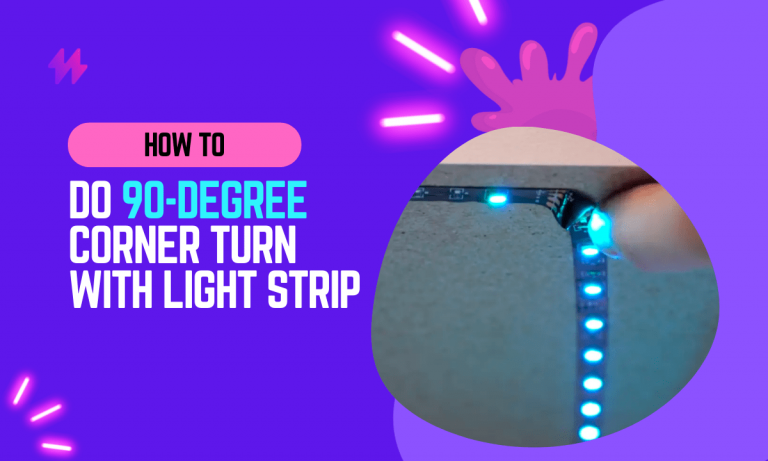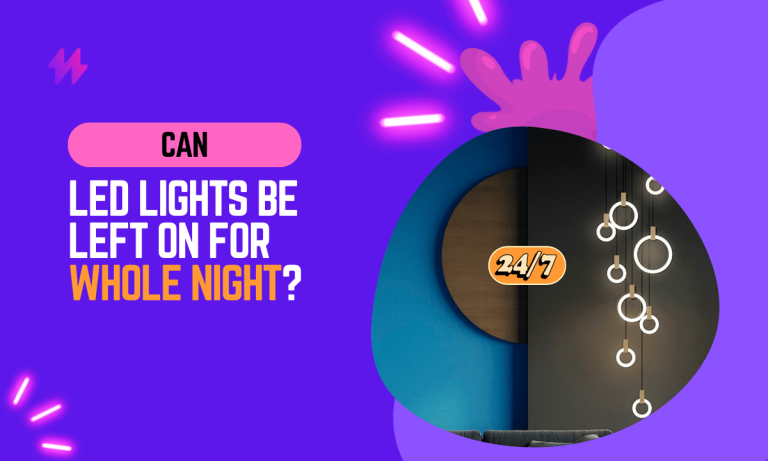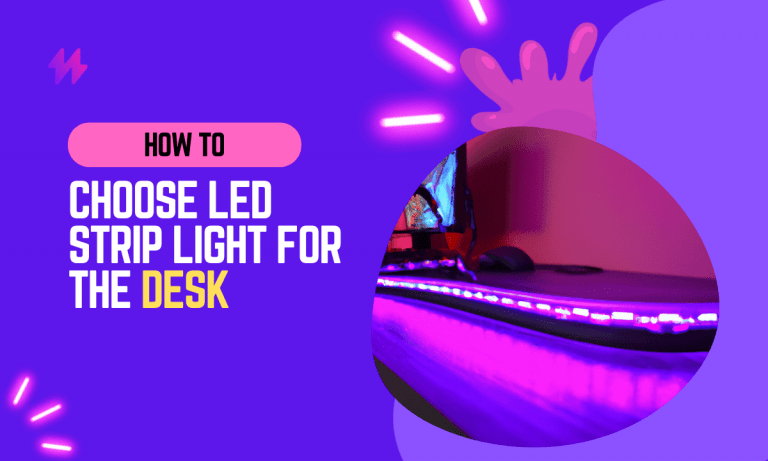What are the Different Types of LED Strip Lights and Their Features
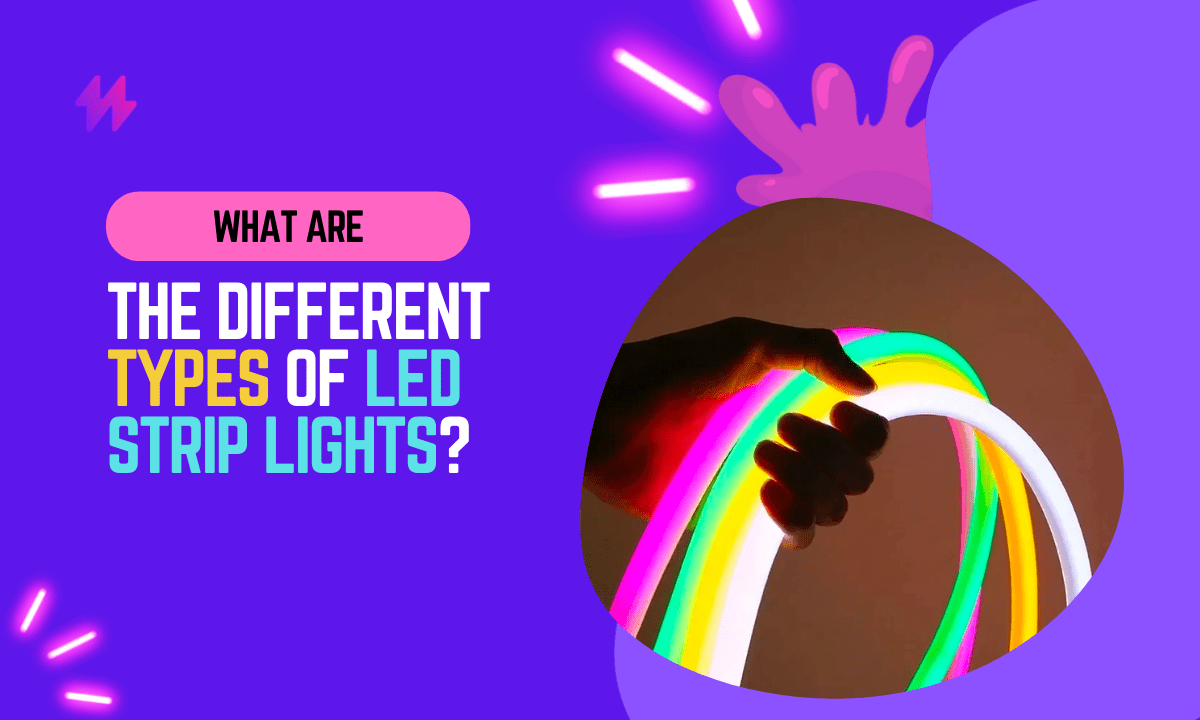
LED strip lights have become increasingly popular in recent years, offering a versatile and energy-efficient lighting solution for various applications. Whether you want to enhance the ambiance of your home, add a touch of creativity to your space, or illuminate commercial environments, understanding the different types of LED strip lights and their features is essential.
In this blog, we will dive into the world of LEDs and explore the various types of LED strip lights available on the market today. By understanding the features and characteristics of each type, you will be equipped with the knowledge to choose the right LED strip lights for your specific needs and preferences.
LED strip lights can serve as an effective lighting fixture for both residential and commercial settings. As you consider your lighting project, keep in mind the various color-changing lighting options available, including RGB lighting and white lighting, to achieve the desired ambiance and functionality.
Exploring LED Lights: What Are the Different Types of LED Strip Lights and Their Features?
In general, there are seven types of LED strip lights, each offering unique features and functionalities. You can find them below.
In general, there are seven types of LED strip lights, each offering unique features and functionalities. You can find them below. Among these options, flexible strip lights are particularly versatile, making them suitable for various lighting applications. Understanding the different types of LED strip lights and their features will help you make informed decisions for your home lighting projects.
Exploring Standard LED Strip Lights in the World of LED Lighting
Standard LED strip lights, also known as single-color LED strip lights, are the most common and widely used type. They consist of a flexible circuit board with a series of LEDs emitting a single color, typically white. These lights are available in various lengths, densities, and brightness levels, allowing for customization based on specific lighting requirements.
Single-color LED strip lights come in different shades of white, including warm white (2700K-3000K), neutral white (4000K-5000K), and cool white (6000K-6500K). The choice of color temperature depends on the desired atmosphere and the purpose of the lighting installation.
Dimmable LED strip lights can be controlled through compatible dimmer switches or dedicated controllers. On the other hand, non-dimmable LED strip lights maintain a fixed brightness level.
Standard LED strip lights have a wide range of applications due to their simplicity and versatility. They are commonly used for general ambient lighting in residential and commercial settings, such as under-cabinet lighting in kitchens, accent lighting in living rooms, or task lighting in offices. They can also be installed in architectural features, retail displays, and signage, providing an aesthetically pleasing and functional lighting solution.
Standard LED strip lights are excellent for multiple types of illumination due to their inherent versatility. When selecting lighting fixtures for a project, understanding what are the different types of LED strip lights and their features can greatly enhance customizability and effectiveness in both residential and commercial lighting applications.
Exploring Various Types of RGB LED Strip Lights: A Comprehensive Guide
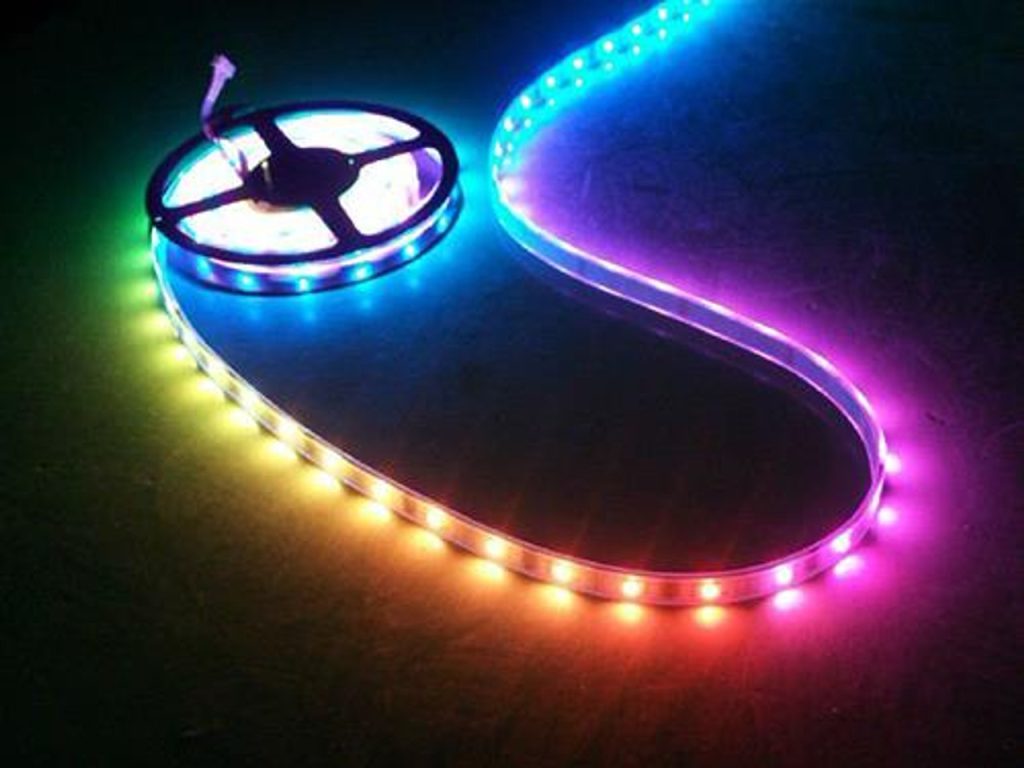
RGB LED strip lights are a popular choice for those seeking vibrant and dynamic lighting effects. RGB stands for Red, Green, and Blue, which are the primary colors used to create a wide spectrum of colors. RGB LED strip lights consist of three separate LED chips, one for each color, placed in a repeating pattern along the strip.
One of the key features of RGB LED strip lights is their ability to display an extensive palette of colors. By combining different intensities of red, green, and blue, you can create millions of color variations, ranging from subtle pastels to bold and vibrant hues.
RGB LED strip lights are typically accompanied by remote control or can be controlled through smartphone apps. These control methods provide convenient access to features such as color selection, brightness adjustment, and dynamic lighting modes. Some advanced systems even offer color-changing effects, such as gradual color transitions, pulsating patterns, and strobe effects, adding excitement and drama to the lighting experience.
RGB LED strip lights are commonly used in entertainment areas, such as home theaters, gaming rooms, and bars, to create immersive and dynamic lighting experiences.
RGB LED strip lights offer a stunning array of color options thanks to their ability to mix the primary colors Red, Green, and Blue. These versatile lighting solutions can elevate both residential and commercial spaces, providing opportunities for creative and engaging lighting setups. By leveraging multi-colored LEDs, homeowners can achieve responsive lighting environments that adapt to various moods and activities. Furthermore, utilizing LED technology ensures not only a brighter output but also a longer lifespan compared to traditional incandescent light bulbs.
Exploring the Versatility of RGBW|RGBWW LED Strip Lights
RGBW (Red, Green, Blue, White) and RGBWW (Red, Green, Blue, Warm White) LED strip lights are advanced versions of RGB strip lights that incorporate an additional white LED component. These LED strips combine the color-changing capabilities of RGB with the ability to produce white light.
RGBW and RGBWW LED strip lights feature a dedicated white LED alongside the traditional red, green, and blue LEDs. This white LED can emit either a neutral white or warm white color temperature, depending on the variant chosen.
The addition of the white LED component in RGBW and RGBWW LED strip lights allows for improved color accuracy and versatility. The white light helps to balance and enhance the overall color reproduction, resulting in more precise and vibrant color outputs.
These LED strips are commonly used in architectural lighting, stage productions, event lighting, and interior design projects where the combination of colored and white light is desired.
Also read: RGB vs RGBIC – What’s The Difference?
RGBW and RGBWW strip lights provide a notable enhancement in color control compared to standard RGB configurations, making them ideal for applications where both vibrant and subtle illumination are desired. By integrating these advanced multi-colored LEDs, users can effortlessly create customized lighting setups that cater to a plethora of environments, from theatrical lighting to residential lighting applications.
Tunable White LED Strip Lights: Exploring the Versatility and Benefits
Tunable white LED strip lights are one of the unique types of LED strip lights that allows you to adjust the color temperature of the light output. They feature a combination of warm white and cool white LEDs on the strip, which can be controlled to create various shades of white light, ranging from warm to cool.
Tunable white LED strips typically offer a wide range of color temperature options, allowing you to create a warm and cozy atmosphere (around 2700K) or a cool and energizing environment (up to 6500K).
Tunable white LED strip lights provide the flexibility to simulate different lighting conditions, including natural daylight. By adjusting the color temperature, you can replicate the warm glow of sunrise or sunset, create a bright and crisp daylight setting, or customize the lighting to suit specific tasks or activities.
This versatility makes tunable white LED strips ideal for spaces where lighting needs vary throughout the day, such as offices, retail stores, or residential settings.
Tunable white LED strip lights not only enhance the beauty of a space but also promote the psychological benefits associated with proper artificial lighting. With the ability to create varying levels of brightness and warmth, they are a perfect solution for in-home lighting DIY projects as well as commercial settings requiring responsive lighting environments.
High-CRI LED Strip Lights: Enhancing Illumination Quality

High-CRI (Color Rendering Index) LED strip lights are designed to accurately render colors, making them ideal for applications where color accuracy is crucial. CRI is a measure of how well a light source reveals the true colors of objects compared to natural daylight. High-CRI LED strips typically have a CRI value of 90 or above, indicating excellent color fidelity.
The color accuracy provided by high-CRI LED strip lights is vital in settings where accurate color representation is necessary, such as art galleries, photography studios, retail spaces, or any environment where color-sensitive tasks are performed.
High-CRI LED strip lights are commonly used in art galleries to illuminate artwork without distorting or altering its colors. They are also favored by photographers and videographers who require accurate lighting for capturing subjects or products.
Retail spaces that showcase merchandise, such as clothing or cosmetics, benefit from high-CRI lighting to ensure accurate color representation.
You may also like: What is The Best Lighting for Makeup?
High-CRI (Color Rendering Index) LED strip lights are designed to accurately render colors, making them ideal for applications where color accuracy is crucial. CRI is a measure of how well a light source reveals the true colors of objects compared to natural daylight. High-CRI LED strips typically have a CRI value of 90 or above, indicating excellent color fidelity. The color accuracy provided by high-CRI LED strip lights is vital in settings where accurate color representation is necessary, such as art galleries, photography studios, retail spaces, or any environment where color-sensitive tasks are performed. High-CRI LED strip lights are commonly used in art galleries to illuminate artwork without distorting or altering its colors. They are also favored by photographers and videographers who require accurate lighting for capturing subjects or products. Retail spaces that showcase merchandise, such as clothing or cosmetics, benefit from high-CRI lighting to ensure accurate color representation. You may also like: What is The Best Lighting for Makeup? In addition to their superior color rendering, High-CRI LED strip lights can serve as high brightness strip lights, enhancing the aesthetic appeal of any space. They can also be integrated into various lighting systems, including customizable lighting solutions that cater to specific illumination needs, such as general lighting and indoor lighting applications.
Waterproof LED Strip Lights: Exploring the Versatile Options

Waterproof LED strip lights are specifically designed to be resistant to moisture, making them suitable for both indoor and outdoor applications. These LED strips are encapsulated in a waterproof coating or housed in a protective casing that shields the components from water, humidity, dust, and other environmental factors.
Waterproof LED strips are one of the most used types of LED strip lights that come with different levels of protection, indicated by IP (Ingress Protection) ratings. The IP rating consists of two digits, where the first digit represents the level of protection against solid objects, and the second digit represents the level of protection against water.
For example, an IP67 rating means the LED strip is dust-tight (6) and can withstand immersion in water up to 1 meter for a limited time (7).
Waterproof LED strip lights are ideal for outdoor and wet area applications, such as gardens, patios, decks, and poolside installations. They can withstand exposure to rain, splashes, or direct contact with water, ensuring reliable performance even in challenging weather conditions. Waterproof LED strips are also suitable for use in bathrooms, kitchens, or any area prone to moisture, where regular LED strips would be at risk of damage.
Waterproof LED strip lights are a fantastic solution for creative outdoor lighting applications, allowing users to illuminate gardens and decks without the worry of moisture damaging the lights. With their durability, they also serve as effective outdoor lighting options that can enhance the ambiance of any event or space. In addition to their advantages, these high brightness strip lights bring powerful illumination to large areas, accommodating various lighting requirements and aesthetic preferences.
Exploring Flexible LED Strip Lights: Versatile Options for Every Space
Flexible LED strip lights, also known as LED tape lights or ribbon lights, are characterized by their flexibility and versatility. They consist of a thin and flexible circuit board with surface-mounted LEDs evenly spaced along the strip.
The main advantage of flexible LED strip lights is their ability to conform to different shapes and contours. They can be easily bent around corners, curved along curved surfaces, or even cut into smaller segments to fit specific lengths. This adaptability makes them suitable for a wide range of applications and allows for creative lighting designs.
Flexible LED strip lights often come with self-adhesive backing or you can use double-sided tape, making installation quick and convenient. The adhesive backing allows the strips to be securely attached to various surfaces, such as walls, ceilings, cabinets, or furniture, without the need for additional mounting hardware.
If you’re not using flexible LED strip lights, you can cut LED lights to bend LED strips around corners.
Flexible LED strip lights offer endless possibilities for creative design and installation, particularly when paired with unique settings. These lighting solutions can be adapted for various applications, from lighting a living room with soft incandescents to enhancing outdoor patio lighting with high-power LEDs that withstand the elements. Additionally, the adaptability of these strips makes them suitable for illuminating spaces where traditional fixtures may not fit, such as underneath shelves or around architectural features. Understanding how to implement these technologies effectively is key for achieving broader lighting projects, including backlighting for televisions and displays.
Conclusion: Exploring Different Types of LED Strip Lights
In conclusion, the diverse range of LED strip lights available today allows for tailored lighting solutions across various applications, enhancing both the functionality and aesthetic appeal of spaces. The different types of LED strips, such as single-color, RGB, RGBW, and addressable LEDs, offer unique features that cater to specific needs. Single-color strips provide a consistent and steady light, ideal for creating ambient lighting in homes or commercial settings. RGB strips, on the other hand, offer the flexibility of changing colors through a controller, making them perfect for mood lighting and entertainment spaces. RGBW strips add an extra white diode to the standard RGB setup, allowing for purer white tones and improved color mixing, which is advantageous in scenarios where a balance between ambiance and task lighting is required.
Moreover, addressable LED strip lights represent the cutting edge of lighting technology, with the ability to control each LED independently. This feature opens up endless possibilities for dynamic color patterns and sequences, making these strips particularly popular in artistic installations and commercial displays. Each type of LED strip comes with its considerations regarding power requirements, color accuracy, and installation specifics. Understanding these differences is crucial for anyone looking to implement LED lighting solutions effectively. Whether enhancing the home environment, setting up efficient workspace lighting, or adding visual interest to public venues, LED strip lights offer versatile and energy-efficient options that can be adapted to meet a wide range of lighting needs, combining practicality with creative expression to transform any space.
What Are The Different Types Of LED Strip Lights And Their Features |
Standard LED strip lights are an essential component in the lighting industry, often referred to for their versatility and efficiency in a variety of applications. These strips consist of multiple LEDs/m, which emit light across the visible spectrum. They are popular for general illumination and can serve as lighting for various spaces, such as under cabinetry, stairways, or in recreational areas. With features like adjustable brightness and the ability to create smooth, uniform lighting, standard LED strip lights can replace traditional incandescent bulbs and fluorescent lamps. They offer significant advantages in terms of energy efficiency and longevity, thereby meeting the needs for both ambient and task lighting while accommodating dimming capabilities through compatible transformers. Standard LED strips cater to a wide range of lighting needs, from decorative rope lights to more functional applications like shelf lighting, while also providing exceptional brightness specifications suited for photography lighting or theatrical effects.
What are the Different Types of LED Strip Lights and Their Features | Understanding Standard LED Strip Lights
Standard LED strip lights are versatile light sources that can be used in a variety of applications, from ambient lighting to task illumination. These strips consist of multiple LEDs mounted on a flexible circuit board, allowing for easy installation and customization. The LED strip mean usually refers to the length of the strip that contains a specific number of LEDs, commonly measured in LEDs/m strip. High-power LEDs provide a brighter output than their low-output counterparts, making them ideal for general lighting purposes or specific tasks that require high light output. With options ranging from white lighting to vibrant color RGB lights, users can create imaginative lighting ideas tailored to their needs.
Quality LEDs are crucial in determining the overall performance and longevity of standard LED strip lighting. These strips are often designed with different densities, affecting brightness levels and light quality. With the ability to emit a full light spectrum, including bluish-white and yellowish-white colors, these strips can enhance aesthetic aspects while offering optimal illumination. Strip light products can also be customized with various lens systems and diffusers, which aid in achieving smooth light and wide-area illumination. The flexibility of standard LED strips makes them suitable for a plethora of indoor lighting applications, including backlighting, stair lighting, and wall wash light installations that require consistent and permanent lighting solutions.
Understanding standard LED strip lights reveals their versatility in various lighting applications. These light strips typically consist of a series of SMD LEDs mounted on a flexible circuit board. They cater to a wide range of lighting needs, from accent lighting to primary room illumination. The strip light categories also include options for low voltage lighting, making them ideal for residential and commercial projects. With the ability to customize strip brightness and color, standard LED strips allow users to achieve consistent lighting tailored to their requirements.
Key characteristics of standard LED strip lights contribute to their popularity. The design includes various electrical components like optics and lenses that enhance light direction and intensity. These strips emit a vibrant brightness that can illuminate large areas effectively. They are available in different white lighting options, such as bluish-white and yellowish-white light spectrums. Furthermore, the longevity of these LED products ensures that they serve as permanent lighting installations with minimal maintenance, making them an economical choice for any lighting system.
Key Characteristics of Standard LED Strip Lights
Standard LED strip lights are designed to offer a versatile lighting solution suitable for various applications. These strips typically consist of multiple individual LEDs arranged in segments, commonly featuring a density of 18-36 LEDs per meter. The brightness levels can vary significantly, from low output LEDs ideal for ambient or decorative lighting to brighter capabilities that serve as primary room lighting. Powered strips can be connected to an LED system that allows for customisable lighting, making them suitable for different light level needs. Whether used for illuminating ceilings, highlighting architectural features, or providing flexible backlight in areas like bathrooms, standard LED strips deliver a robust lighting experience.
The features of standard LED strip lights include a broad range of color options, enabling users to select from various light colors, including bluish-white light or warmer tones. These strips are often equipped with light engines that enhance light outputs while maintaining longevity. The technology behind these LEDs often allows for smooth dimming through a wall-switch dimmer or integration with a tunable lighting guide for precise control of light intensity. With light density differences playing a crucial role in achieving desired illumination, standard LED strips can be used to create effects like theatrical lighting or music-synchronised light displays, making them a popular choice for both practical and aesthetic purposes.
Standard LED strip lights are versatile lighting solutions that cater to various applications. They are composed of a series of LED emitters mounted on a flexible circuit board, which allows for easy installation in both small and large areas. These LED strips consist of closely packed LEDs that provide significant brightness, making them some of the brightest strip lights on the market. Their design accommodates different LED densities, leading to variations in light output, with options for mere illumination or brighter light as needed. The LED strip voltage varies, enabling compatibility with both low and standard voltage systems, which can be useful for numerous lighting projects, including bathroom lighting or patio lighting.
Key features of standard LED strip lights include the ability to produce multiple color temperatures and the use of advanced LED technology. Many models include a diffuser cover that helps soften and spread the light, creating smoother lighting effects. For specific projects, users can select strip light categories based on their brightness needs or color preferences. Standard LED strips can easily be customized into led strip series or rigid strip lighting, adapting to both functional and aesthetic requirements. Whether for flood illumination or case illumination, these products serve as stand-alone lighting solutions or can be integrated with illuminated ceilings and light bars, providing creative flexibility in various environments.
Applications of Standard LED Strip Lights
Standard LED strip lights have gained prominence in various applications due to their versatility and efficiency. These light strips are often utilized in residential and commercial environments for large area lighting, providing bright and even illumination. Their low-profile design makes them suitable for mounting in tight spaces. Common uses include accent lighting and task lighting, enhancing areas like kitchens and workspaces. The actual light output from standard LED strips is often superior to traditional incandescent light bulbs, making them a preferred choice for energy-efficient solutions. With varying LEDs/length and strip light color options, projects can achieve the desired ambiance while utilizing less power.
These strips are also popular in artistic and theatrical lighting effects, where the design can play a crucial role in creating an atmosphere. The integration of standard LED strips in applications like signage and displays showcases their adaptability across industries. Many LED strip products come with options to customize brightness and color, allowing for creativity in design. Utilizing reflective surfaces can enhance the overall light color and brightness. Whether creating an inviting environment in homes or providing functional illumination in workplaces, standard LED strips stand out as one of the best-led options available today.
Understanding standard LED strip lights is essential for anyone looking to illuminate a space effectively. What are the Different Types of LED Strip Lights and Their Features can vary significantly based on applications and specifications. Standard LED strips typically feature low-profile LEDs, which provide bright light while maintaining a sleek design. These strips come in various color components, allowing users to create a range of lighting effects, from warm natural lighting to vibrant colors suitable for a reef tank lights project. The led strip refers to segments containing omni-directional LEDs that can be mounted easily, offering flexibility in various installations. Key characteristics include LED density differences that impact brightness and longevity, making them suitable for light strip categories like grow lights and decorative accents. The energy-efficient strips emit light conducive to enhancing ambiance and functionality in any environment.
Diving into RGB LED Strip Lights
RGB LED strip lights are known for their versatility and ability to produce vibrant colors. These lights utilize a combination of red, green, and blue LEDs to create a spectrum of different colors, making them ideal for various applications. With features like RGBW capabilities, which add a white LED to enhance color options, these strips can produce a wide array of hues and tones. The innovative strip light wire design allows for easy installation and can be adapted to different settings, from home decor to commercial projects. Brands like Ledsupply and Elara Strip are popular choices for their quality and product range in LED strip manufacturing.
The energetic brightness of RGB LED strip lights is conducive to creating dynamic lighting scenes. These strips can be cut and customized into smaller segments, enabling users to configure them into different shapes or mount them along curved surfaces for unique effects. Projects that require low light output can benefit from the adjustable settings on RGB lights, allowing for both subtle ambient lighting and vibrant displays. Luxurious options like luxeon LEDs and the extensive range of colors from LED tapes offer an impressive strip light longevity while ensuring that the strip emits vivid and varied illumination.
Standard LED strip lights are among the most common options available for various lighting projects. These lights consist of flexible circuit boards that house numerous LEDs grouped in segments. They are ideal for applications requiring consistent light output, such as under-cabinet lighting or ambiance creation. With their ability to mount LEDs along surfaces, they can efficiently utilize light to enhance the overall atmosphere in a room. What are the Different Types of LED Strip Lights and Their Features? Standard LED strips offer a reliable and energy-efficient solution for both residential and commercial use.
The versatility of standard LED strip lights allows them to be used in numerous applications. They can serve as radiators of light in innovative projects, creating unique patterns and designs. Curved lighting effects can easily be achieved by bending these strips, making them suitable for creative installations. RGBW strip lights expand on this concept by adding color depth and dynamic capabilities, making them perfect for events or displays. These options offer energetic brightness conducive to mood-setting in various spaces, whether it’s for everyday lighting or special occasions.
In this blog, we will dive into the world of LEDs and explore the various types of LED strip lights available on the market today. By understanding the features and characteristics of each type, you will be equipped with the knowledge to choose the right LED strip lights for your specific needs and preferences.
Different Types of LED Strip Lights
In general, there are seven types of LED strip lights, each offering unique features and functionalities. You can find them below.
Standard LED Strip Lights
Standard LED strip lights, also known as single-color LED strip lights, are the most common and widely used type. They consist of a flexible circuit board with a series of LEDs emitting a single color, typically white. These lights are available in various lengths, densities, and brightness levels, allowing for customization based on specific lighting requirements.
Single-color LED strip lights come in different shades of white, including warm white (2700K-3000K), neutral white (4000K-5000K), and cool white (6000K-6500K). The choice of color temperature depends on the desired atmosphere and the purpose of the lighting installation.
Dimmable LED strip lights can be controlled through compatible dimmer switches or dedicated controllers. On the other hand, non-dimmable LED strip lights maintain a fixed brightness level.
Standard LED strip lights have a wide range of applications due to their simplicity and versatility. They are commonly used for general ambient lighting in residential and commercial settings, such as under-cabinet lighting in kitchens, accent lighting in living rooms, or task lighting in offices. They can also be installed in architectural features, retail displays, and signage, providing an aesthetically pleasing and functional lighting solution.
RGB LED Strip Lights

RGB LED strip lights are a popular choice for those seeking vibrant and dynamic lighting effects. RGB stands for Red, Green, and Blue, which are the primary colors used to create a wide spectrum of colors. RGB LED strip lights consist of three separate LED chips, one for each color, placed in a repeating pattern along the strip.
One of the key features of RGB LED strip lights is their ability to display an extensive palette of colors. By combining different intensities of red, green, and blue, you can create millions of color variations, ranging from subtle pastels to bold and vibrant hues.
RGB LED strip lights are typically accompanied by remote control or can be controlled through smartphone apps. These control methods provide convenient access to features such as color selection, brightness adjustment, and dynamic lighting modes. Some advanced systems even offer color-changing effects, such as gradual color transitions, pulsating patterns, and strobe effects, adding excitement and drama to the lighting experience.
RGB LED strip lights are commonly used in entertainment areas, such as home theaters, gaming rooms, and bars, to create immersive and dynamic lighting experiences.
RGBW and RGBWW LED Strip Lights
RGBW (Red, Green, Blue, White) and RGBWW (Red, Green, Blue, Warm White) LED strip lights are advanced versions of RGB strip lights that incorporate an additional white LED component. These LED strips combine the color-changing capabilities of RGB with the ability to produce white light.
RGBW and RGBWW LED strip lights feature a dedicated white LED alongside the traditional red, green, and blue LEDs. This white LED can emit either a neutral white or warm white color temperature, depending on the variant chosen.
The addition of the white LED component in RGBW and RGBWW LED strip lights allows for improved color accuracy and versatility. The white light helps to balance and enhance the overall color reproduction, resulting in more precise and vibrant color outputs.
These LED strips are commonly used in architectural lighting, stage productions, event lighting, and interior design projects where the combination of colored and white light is desired.
Also read: RGB vs RGBIC – What’s The Difference?
Tunable White LED Strip Lights
Tunable white LED strip lights are one of the unique types of LED strip lights that allows you to adjust the color temperature of the light output. They feature a combination of warm white and cool white LEDs on the strip, which can be controlled to create various shades of white light, ranging from warm to cool.
Tunable white LED strips typically offer a wide range of color temperature options, allowing you to create a warm and cozy atmosphere (around 2700K) or a cool and energizing environment (up to 6500K).
Tunable white LED strip lights provide the flexibility to simulate different lighting conditions, including natural daylight. By adjusting the color temperature, you can replicate the warm glow of sunrise or sunset, create a bright and crisp daylight setting, or customize the lighting to suit specific tasks or activities.
This versatility makes tunable white LED strips ideal for spaces where lighting needs vary throughout the day, such as offices, retail stores, or residential settings.
High-CRI LED Strip Lights

High-CRI (Color Rendering Index) LED strip lights are designed to accurately render colors, making them ideal for applications where color accuracy is crucial. CRI is a measure of how well a light source reveals the true colors of objects compared to natural daylight. High-CRI LED strips typically have a CRI value of 90 or above, indicating excellent color fidelity.
The color accuracy provided by high-CRI LED strip lights is vital in settings where accurate color representation is necessary, such as art galleries, photography studios, retail spaces, or any environment where color-sensitive tasks are performed.
High-CRI LED strip lights are commonly used in art galleries to illuminate artwork without distorting or altering its colors. They are also favored by photographers and videographers who require accurate lighting for capturing subjects or products.
Retail spaces that showcase merchandise, such as clothing or cosmetics, benefit from high-CRI lighting to ensure accurate color representation.
You may also like: What is The Best Lighting for Makeup?
Waterproof LED Strip Lights

Waterproof LED strip lights are specifically designed to be resistant to moisture, making them suitable for both indoor and outdoor applications. These LED strips are encapsulated in a waterproof coating or housed in a protective casing that shields the components from water, humidity, dust, and other environmental factors.
Waterproof LED strips are one of the most used types of LED strip lights that come with different levels of protection, indicated by IP (Ingress Protection) ratings. The IP rating consists of two digits, where the first digit represents the level of protection against solid objects, and the second digit represents the level of protection against water.
For example, an IP67 rating means the LED strip is dust-tight (6) and can withstand immersion in water up to 1 meter for a limited time (7).
Waterproof LED strip lights are ideal for outdoor and wet area applications, such as gardens, patios, decks, and poolside installations. They can withstand exposure to rain, splashes, or direct contact with water, ensuring reliable performance even in challenging weather conditions. Waterproof LED strips are also suitable for use in bathrooms, kitchens, or any area prone to moisture, where regular LED strips would be at risk of damage.
Flexible LED Strip Lights
Flexible LED strip lights, also known as LED tape lights or ribbon lights, are characterized by their flexibility and versatility. They consist of a thin and flexible circuit board with surface-mounted LEDs evenly spaced along the strip.
The main advantage of flexible LED strip lights is their ability to conform to different shapes and contours. They can be easily bent around corners, curved along curved surfaces, or even cut into smaller segments to fit specific lengths. This adaptability makes them suitable for a wide range of applications and allows for creative lighting designs.
Flexible LED strip lights often come with self-adhesive backing or you can use double-sided tape, making installation quick and convenient. The adhesive backing allows the strips to be securely attached to various surfaces, such as walls, ceilings, cabinets, or furniture, without the need for additional mounting hardware.
If you’re not using flexible LED strip lights, you can cut LED lights to bend LED strips around corners.
Final Words
In conclusion, the diverse range of LED strip lights available today allows for tailored lighting solutions across various applications, enhancing both the functionality and aesthetic appeal of spaces. The different types of LED strips, such as single-color, RGB, RGBW, and addressable LEDs, offer unique features that cater to specific needs. Single-color strips provide a consistent and steady light, ideal for creating ambient lighting in homes or commercial settings. RGB strips, on the other hand, offer the flexibility of changing colors through a controller, making them perfect for mood lighting and entertainment spaces. RGBW strips add an extra white diode to the standard RGB setup, allowing for purer white tones and improved color mixing, which is advantageous in scenarios where a balance between ambiance and task lighting is required.
Moreover, addressable LED strip lights represent the cutting edge of lighting technology, with the ability to control each LED independently. This feature opens up endless possibilities for dynamic color patterns and sequences, making these strips particularly popular in artistic installations and commercial displays. Each type of LED strip comes with its considerations regarding power requirements, color accuracy, and installation specifics. Understanding these differences is crucial for anyone looking to implement LED lighting solutions effectively. Whether enhancing the home environment, setting up efficient workspace lighting, or adding visual interest to public venues, LED strip lights offer versatile and energy-efficient options that can be adapted to meet a wide range of lighting needs, combining practicality with creative expression to transform any space.




